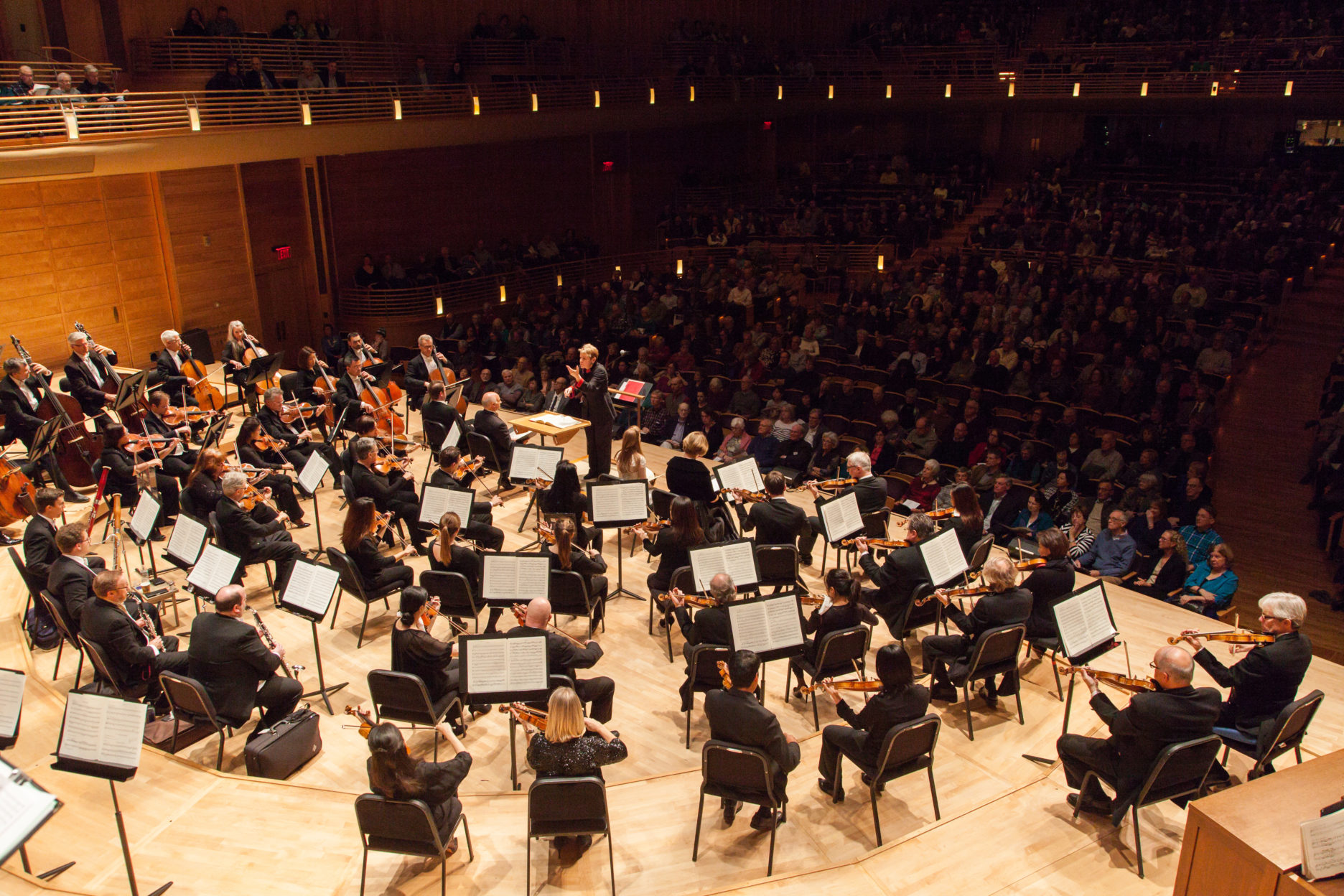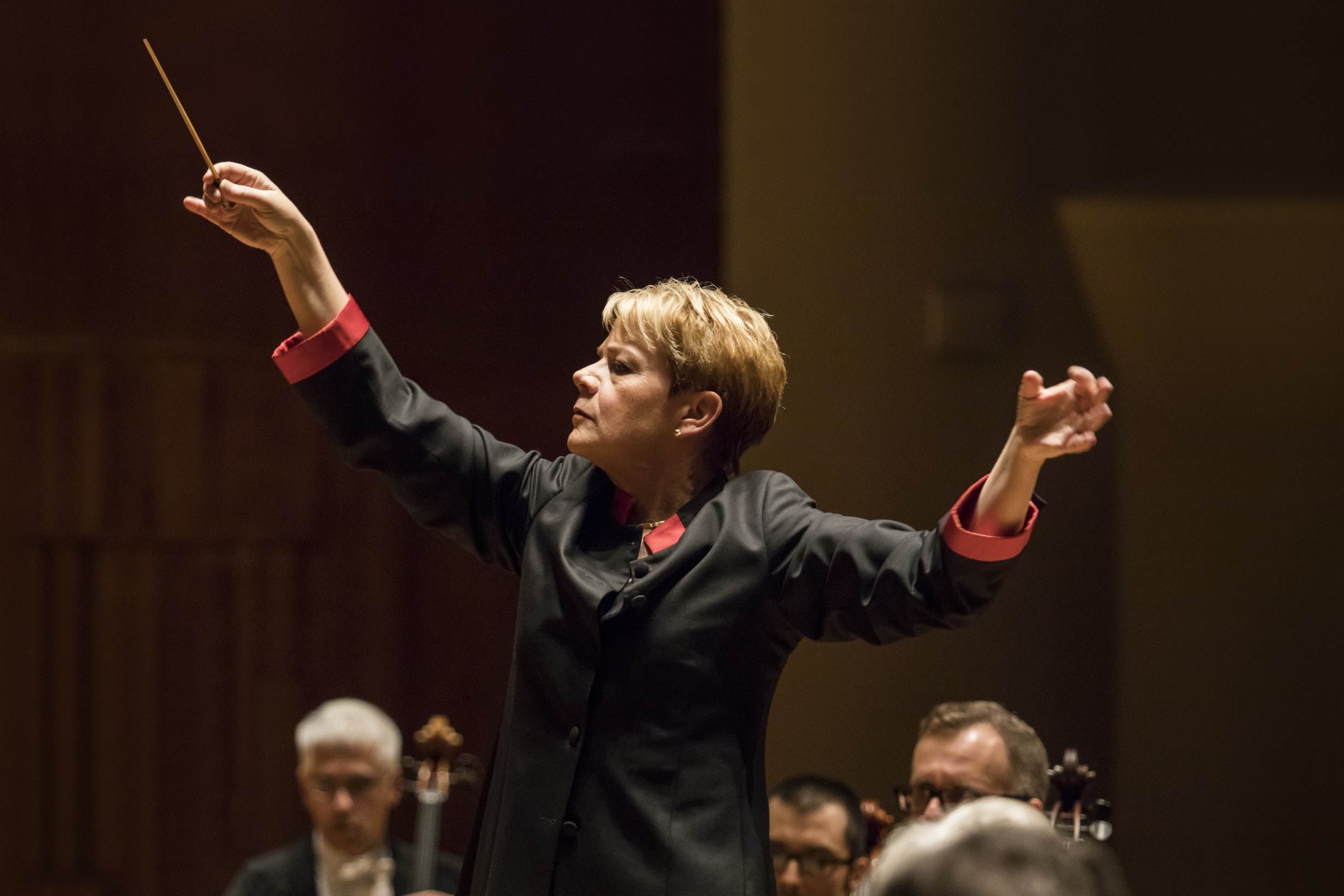Let’s get the persnickety stuff out of the way first. Then we can get to why the Baltimore Symphony Orchestra’s second Porgy and Bess in concert at the Strathmore Music Center in three years is something to celebrate, particularly as there has been a fracas recently over future funding for the orchestra.

The BSO’s partially staged performance of Gershwin’s self-proclaimed “folk opera” with book by DuBose Heyward earned from me a solid B. But hey, I got to hear a work that the composer himself willed would never be performed unless by an all-black cast. While that doesn’t make it obscure, it does limit the chances the work will be in an opera company or orchestra’s typical rotation. In the case of the BSO, a spokesperson tells me it’s the second performance in three years simply because audiences expressed their love for it, and because it’s approaching its 85th anniversary.
For me, it was a treat to hear a piece by an American musical genius, that foreshadowed the bright harmonies of Bernstein yet to come, a work that blends opera, folk themes, and musical theater in a uniquely American way. Every time I hear it, among my reactions however critical, I do feel proud that it was created by a fellow countryman.
Maestra Marin Alsop’s evident enjoyment of the score kept the musicians clipping along. In sum, because the cast was solid, but not top flight, the overall effect was neither shimmering nor lackluster, but it surely wasn’t one I would rush to own as a recording. I likely wouldn’t even bother to hear it again with the same cast. And despite the superiority over those in the Kennedy Center, I am underwhelmed by the acoustics in the Strathmore.
Why the singers were mic’d I do not know, but for the highly decorated American soprano Laquita Mitchel, who handily reprised her 2016 BSO performance of Bess with a powerful voice obviously capable of hitting the back of the hall, it was unnecessary. More than once, she attempted to turn her face from the mic’s headset, instinctually trying to avoid distorting the notes. Meanwhile, in his BSO debut, British baritone Rodney Earl Clarke’s affable portrayal of Porgy was compellingly sweet and kind, but his voice was often submerged by the orchestra, even with the mic.
Character tenor Larry Hylton’s Sportin’ Life, another reprisal, also was strong enough to be off mic, as were soprano Reyna Carguill’s richly toned Serena and soprano Jasmine Habersham’s Clara. Both Carguill and Habersham were making their BSO debuts. Baritone Lester Lynch as Crown was everything you want in a bad guy baritone role: booming, menacing, an inimitable presence. He didn’t need a mic either. The Morgan State University Choir directed by Eric Conway were back again to sing the chorus. They sounded a little unfocused and hollow on the higher notes, but whatever technical points I might subtract I will add back for the enthusiasm and fun most of them contributed.

And that’s a perfect segue into why performances like this are good for us. The BSO is a world-class organization, but I don’t insist that every performance be world class. I know what they are capable of and will go out of my way to hear them when I want to. What is more important is the consistent exposure to works such as Gershwin’s, keeping me and others in the region connected to the American musical tradition, in anticipation of what is to come, and all performed by musicians who are excited to bring these works to life for the enjoyment of audiences in our region.
Just this week, to help staunch over 16 million dollars in losses over the past decade, Maryland state legislators passed a bipartisan bill to give the BSO 1.6 million dollars in each of the next two years, while also commissioning a workgroup to study how the orchestra spends. The bill awaits Governor Larry Hogan’s signature at this writing. The bill’s passage is a slackening in the tension between BSO musicians and orchestra management which has sought to cut the orchestra’s full-time status, and along with it, players’ salaries. At the heart of the issue has been whether the proposed cuts would have demoted the orchestra to merely a “regional” one.
The crowd for the Porgy and Bess performance was decidedly 55 and older, but later this week I will be reviewing a BSO OrchKids performance at the Library of Congress, an original composition inspired by Treemonisha, an obscure Scott Joplin opera that Alsop specifically programmed to interest area youths. In an interview earlier this year, Alsop told me that when she commissioned Roxanna Panufnik’s Across the Line of Dreams, she insisted on it being rooted in Maryland’s history, which is how it came to be in part about Harriet Tubman.
The way I see it, Alsop is leveraging her organization’s regional status to elevate the orchestra’s importance on the world stage. She does this by offering popular performances of works like Porgy and Bess, the first African American-centric opera, while exploring lesser-known American works like Joplin’s with audiences of the future, simultaneously commissioning new works that explore our history for audiences of today and tomorrow. Together, these “regional” efforts across generations and demographics help us reflect where we’ve been historically as a nation and provide opportunities to define where we are going. This keeps the BSO relevant at home and abroad.
That the quality of Alsop and her musicians is world class should not be in question. They have just come off an international tour. In addition to her duties with the BSO, Alsop has just been named the first female artistic director among the stuffiest of classical music’s old guard, the Vienna Radio Symphony Orchestra. Incidentally, this precedent was set where? In Baltimore, where Alsop was named in 2007 as our nation’s first full-time female conductor of a national symphony. The BSO, founded in 1916 initially as a branch of the Baltimore municipal government, is a uniquely regional, American institution.
Why the orchestra is losing money and whether the BSO will eventually see cuts is a serious consideration with far-reaching implications at that, particularly since by its own reckoning, the BSO as part of Maryland’s overall arts community, helps to create 17,000 jobs in the region, and generate one billion dollars into the economy. As for the notion that cuts would reduce the BSO to merely a regional outfit, that is misguided. Being a regional orchestra should have equal measure as being one that is world class: one depends on the other.
Perhaps future negotiations could be framed as whether BSO musicians should be considered full-time regional public servants whose extraordinary skills are markers of how world-class our region is.
Running Time: 2 hours with one 20 minute intermission.
The Baltimore Symphony Orchestra’s presentation of Porgy and Bess played one-night-only on April 11, 2109, at Strathmore – 5301 Tuckerman Lane, in Bethesda, MD. Two more performances will be at the Meyerhoff Symphony Hall in Baltimore on Saturday, April 13 at 8 pm, and Sunday, April 14, at 3 pm. These two performances will feature Robert Cantrell as Porgy. For tickets, go online.




